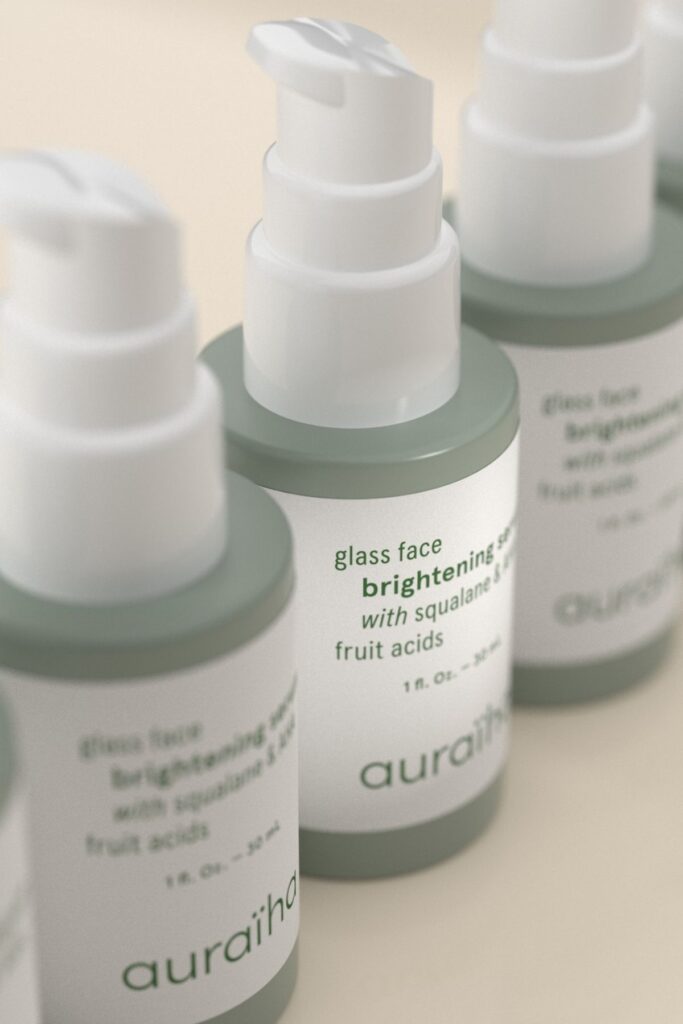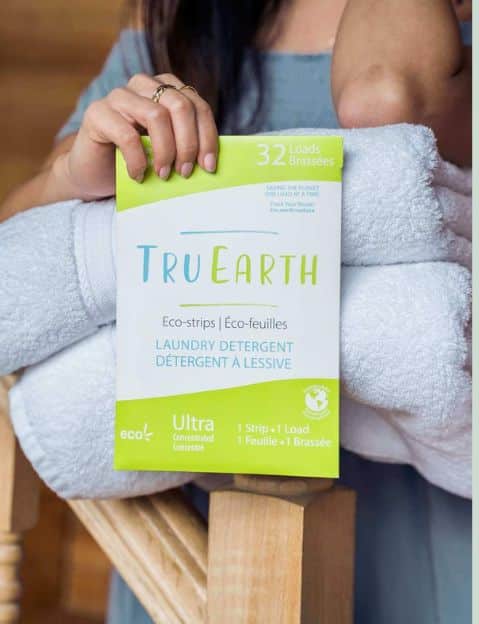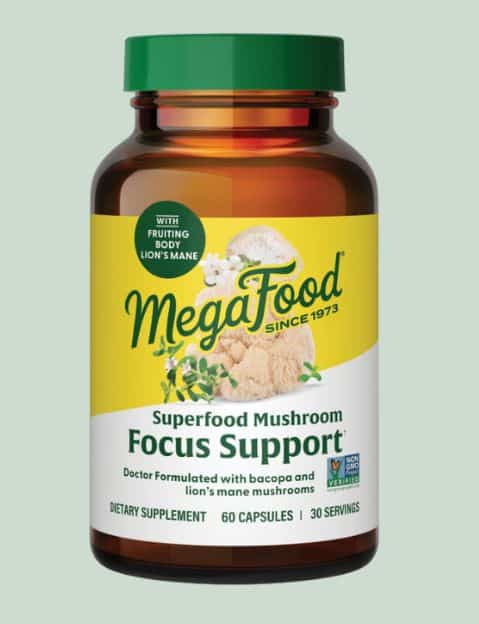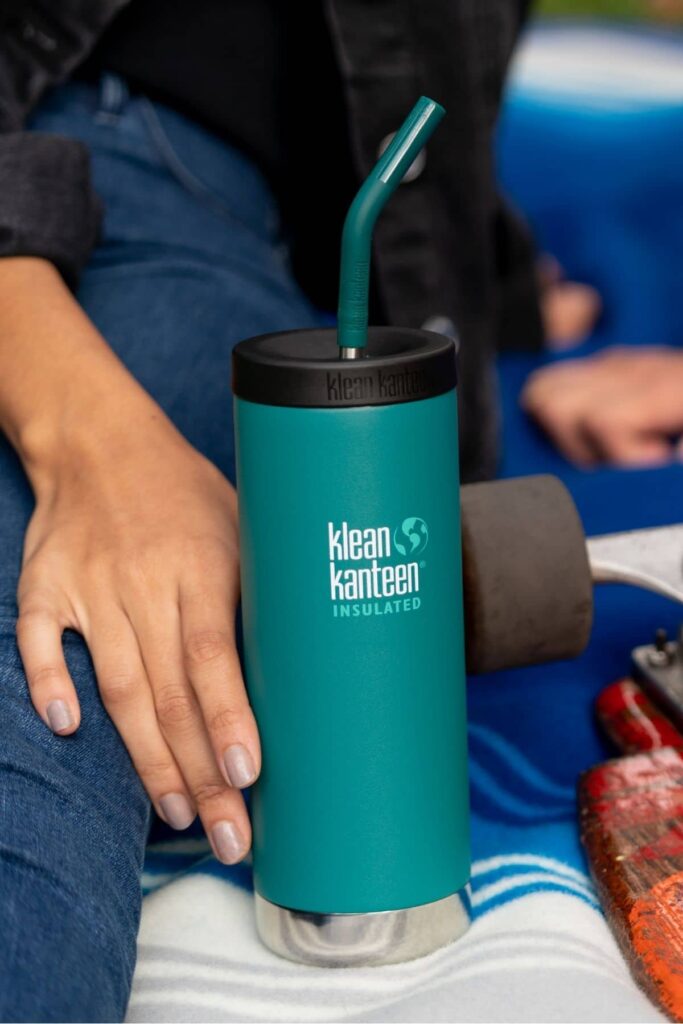Last Updated on November 13, 2024
Stockings were always my absolute favorite part about the holiday season so I had to create a guide for this year’s hottest zero waste and eco friendly stocking stuffers.
I love small gifts; they have always been my favorite. What can I say? I love the little things like socks, bars of soap, the occasional gift card, and chocolate! Lots of chocolate.

This post was sponsored. Many of the links below are affiliate links for more information please see my disclosure policy.
So, I wanted to create an easy guide so you can find a few perfect gifts that will easily slide into a stocking on Christmas morning, and so you can avoid Amazon.
If you’re looking forward to stuffing stockings this year, I’ve rounded up some zero waste and eco friendly stocking stuffers so you can ditch plastic trinkets and gadgets for some of these zero waste, ethical alternatives.
relaxing at home:
I think my favorite part of winter is getting cozy inside so I hope this holiday season, you’ll find some time to get snuggly.
Slip on your favorite jam-jams, light a few candles, snuggle with a thick blanket, sip some hot cocoa, eat a few cookies, and watch a bad holiday movie or a board game – whatever you’re into.


for movie and tv show marathons:
Love flipping through channels and watching a good movie? Then you also know how annoying it is when your remote controller batteries conk out.
That’s why Coast Portland’s zithion-X USB-C rechargeable batteries are so convenient: You’ll always have batteries ready, because you can recharge them!
These batteries quickly recharge in roughly 2.5 hours using USB-C charging cables. They have long-lasting run times, with 2-6x longer than other batteries.
You can easily check the status of your battery’s charge level with a built-in charge level indicator too. It’ll be solid red when charging and solid green when fully charged.
Best of all, these zithion-C batteries are a carbon neutral certified product. Their production and use result in zero increase in CO2 levels in the atmosphere. Plus, being reusable, they help keep batteries out of landfills.
unwinding on your phone:
Know someone who loves to scroll on their phone after a long day? Consider gifting them a compostable phone case as a stocking stuffer!
Pela Case offers compostable phone cases for android and iphones alike with a wide array of styles and designs to choose from.
They even have compostable accessories like phone grips and card holders.
Everything is delivered plastic-free.
Plus they offer Pela360, a recycling program that lets you return your old case when you buy a new one.



stay comfy:
Pact creates underwear made from 95% GOTS certified organic cotton. Plus, they’re so comfy!
A pair or two should easily fit into a Christmas stocking! I love how cozy this 6-pack of boy shorts look.
Plus, all of Pact’s clothes are made in a fair trade certified factory, shipped carbon neutral, and have plastic-free recyclable packaging.
sip something warm:
Arbor Teas offers organic, fair-trade, loose-leaf tea in backyard compostable packaging.
It’s made from a cellulose material, and even their labels on the package are made from sugar cane waste and compostable too.
I love their green tea, but if you want to keep the holiday theme going, you need to try their Holiday Spice Black Tea!


add some ambiance:
P.F. Candle Co makes 100% vegan and non-toxic soy wax candles hand-poured into apothecary inspired glass amber jars. Vegan candles are amazing and I love that it has a kraft paper label and brass lid!
This plastic-free candle is paraben-free, phthalate-free and never tested on animals. It’s homemade in California with 100% domestically grown soy wax and has a cotton core wick.
worth waking up for:
Looking for something to look forward to? All these gifts will make mornings in the winter more bearable.
So whether you’re getting ready for the day, or just trying to get your mojo going, these are my top picks!

perfect curls:
A Simple Planet is a sustainable haircare brand that focuses on refillable, plant-based products. They use organic, natural ingredients and offer refills.
Their curl cream hydrates and enhances curls using biodegradable, organic ingredients in reusable and refillable packaging.
It’s free from harsh chemicals too, such as silicones, parabens, or artificial additives.
Use the code goingzerowaste for 15% off.


for fresh breath:
Greco Gum’s Mastic Gum is an ancient, natural chewing gum with unique health benefits.
This plastic-free all-natural gum is made with 100% pure Chios mastic, sustainably harvested on the island of Chios in eastern Greece.
Chewing this gum supports dental health by naturally cleansing the mouth and strengthening the jaw muscles.
It also promotes gut health by balancing stomach acids and supporting digestion.
The first 100 people to claim KATHRYN15 will receive an additional 15% off their first order.

floss those teeth:
Don’t just brush those pearly whites – floss them too! Cocofloss gets chompers jolly clean with its patented, loofah-like weave of 500+ scrubby threads spun from recycled water bottles.
This eco floss is infused with coconut oil, vegan wax, and irresistible scents. The floss is free from BPA, parabens, SLS, and PFAs.
The Cocofloss Holiday Collection includes Elf-Care Samplers, Cocofloss Holiday Sets, Cocobrush Holiday Sets, Sea-Life Conservation Sets, and Minty Mistletoe Duos.

for fashion lovers:
ThredUp is an online consignment and thrift store that sells over 55k brands from Gap to Gucci.
You can find everything from women to kid’s clothing, all up to 90% off retail price.
Purchasing a ThredUp gift card makes a great stocking stuffer!
There’s the option to buy a physical or digital gift card too, making it ideal for last minute gifting.

glam up:
Get ready for the day with Billion Dollar Beauty’s Babe Bundle. This kit comes with a beauty box, blush, brow powder, brow pomade, eyeshadow, highlighter, lip balm and tweezers – and it’s all vegan, cruelty-free and paraben-free.
Better yet, you only have to buy it once – because it’s refillable for life! The box it comes in is reusable and made from 30% PCR plastic. You can refill it with any colors you want, which helps reduce waste because you’ll pick shades you desire.

to brighten your day (and skin):
Kiss dull skin in the morning goodbye with Aurahïa’s Glass Face brightening serum. This EWG verified serum is vegan, cruelty-free and made with natural, gently exfoliating ingredients.
Apply it twice daily for best results, once in the morning and once at night. Use it before moisturizing or after cleansing for soft glowing skin.
Aurahïa uses packaging materials that are recycled, reusable or zero waste. Their labeling ink is non-toxic and water-based.
for the skincare fanatics:
If you’re a skincare fanatic, I love you. No, really! I have sensitive acne prone skin and no matter what I do I always seem to have texture on my face.
For the first time in years, I’ve come prettyyyy close to fixing it. I mean it’s still textured but it’s better than it was last year! And, that’s thanks to skincare fanatics and the geniuses behind some of my favorite products.
Check out my blog post 20 Organic Zero Waste Skincare Brands for even more recommendations!

for smoother skin:
Know someone who suffers from dry skin in the winter? Why not gift them Brondell’s Nebia Self Care Kit? Dry brushing helps exfoliate and safely remove dry skin.
The kit includes a long-handled bamboo loofah, a boar-hair bristle brush with pumice stone, and a bamboo cotton shower cloth complete with its own cotton storage bag.
Everything is sustainably sourced, and it’s all made using plastic-free materials. The cotton storage bag is also ideal for travel!
The self care kit is BOGO free with purchase of Yuba HaloNetic.
refills on refills:
Activist Skincare is refillable, vegan, cruelty-free, and 5% for the planet. The Sample Kit, Sea to Skin Cleansing Gel and Calming Force Clear Skin Serum for acne-prone skin are perfect stocking stuffers.
You can keep your empty glass bottles and refill them at home. The pouches are recyclable through TerraCycle and the ingredients are super-effective actives and botanicals.
You can keep your empty glass bottles and refill them at home. Activist’s pouches are recyclable through TerraCycle and the ingredients are super-effective actives and botanicals.




sustainably harvested:
Josie Maran is a woman owned beauty brand that packages most of their products in glass bottles and has partnered with Terracycle to take back empties.
Their 100% Pure Argan Oil (their whipped version is my absolute favorite! ) is vegan, cruelty-free and completely pure – it’s intensely hydrating.
Josie Maran’s argan oil comes from a UNESCO-protected region to help prevent deforestation and over-harvesting.
A single argan tree can live for more than 600 years and produce fruit throughout its entire lifecycle!
they got it ALL:
BLK + GRN is an all natural marketplace by all Black artisans. They have everything ranging from nail polish to hair care.
Their Carib Lime Body Soap is made from 100% plant essences, cold-processed and has a revitalizing citrus scent that’ll make any Christmas stocking smell great.
Justin and I have a tradition of gifting each other multiple bars of soap in our stockings! It’s an in expensive treat that we get to use all year long!

getting active in the new year:
Know someone who enjoys barre, spin, and orange theory classes? Here are a few of my favorite workout companions!
for washing all those work out clothes:
Tru earth is a certified B Corporation that creates sustainable laundry detergent strips.
Their eco strips are completely plastic free. They come in a compostable cardboard sleeve that doubles as a shipping envelope.
1 strip equals 1 load, making each pack good for 32 loads. These are perfect stocking stuffers for fitness lovers because when you work out frequently (take it from me) you’re ALWAYS doing laundry.

boosting energy levels:
MegaFood is a certified B Corporation that formulates sustainable vitamins and supplements.
They’re non-GMO project verified, 1% For The Planet, Plastic Neutral, and certified glyphosate residue free. They test for over 150 pesticides and herbicides.
For stocking stuffers, check out their mushroom focus support. Formulated with lion’s mane, this will help support a sense of alertness. Perfect for supporting energy levels as you exercise.

for outdoor runs:
EarthHero is an online marketplace for thousands of sustainable goods!
They’re a B Corp, 1% for the Planet, and uses plastic-free and carbon-neutral shipping.
For stocking stuffers, check out their Hip Pack from Cotopaxi. It’s made from 100% repurposed nylon. Plus, this 3L fanny pack donates 1% towards world-changing nonprofits worldwide!


stay hydrated:
Klean Kanteen’s Stainless Steel Straws are perfect stocking stuffers!
They are a family owned, B corp that’s completely plastic-free. And, they’re members of 1% For The Planet so they donate portions of each sale to environmental organizations, and are certified climate neutral!
for book lovers:
Know someone whose always got their nose in a book? Here are a few of our favorites reads that would fit in perfectly with your eco-friendly stocking stuffers!
zero waste newbie:
Shameless plug, but 101 Ways to Go Zero Waste is my book! It would make a great addition to any stocking stuffer.
In 101 Ways to Go Zero Waste, I share low waste tips, DIY recipes for beauty and home; advice for responsible consumption; and even secrets for how to go waste free at the airport.


plant parents guidebook:
Farmer Nick, aka Nick Cutsumpas’ new book Plant Coach, is a plant lover’s dream.
Plant Coach is his comprehensive guide for the everyday plant owner who wants to alleviate the stress of plant ownership while doing the best for their plants and the planet.
Cutsumpas reframes what it means to be a plant parent by viewing the home as an ecosystem, introducing unconventional and sustainable plant tactics.
climate optimists rejoice:
Know a climate optimist? Be sure to stuff this into their stocking: Saving Us by Katharine Hayhoe is a climate scientist’s case for hope and healing in a divided world.
This is not another doomsday narrative about a planet on fire. It is a multilayered look at science, faith, and human psychology, from an icon in her field—recently named chief scientist at The Nature Conservancy.

kickin’ it in the kitchen:
Whether you know an aspiring chef, love to meal prep, or generally dislike cooking, these eco friendly stocking stuffers will help reduce food waste and get dinner on the table fast! Plus, an extra treat for the kitchen’s number one fan – your dog.

freezer prep:
Stasher Bag sells reusable silicone bags that are versatile, plastic-free and BPA-free.
The assorted 4 piece pack includes 1 snack size, 2 sandwich sizes, and 1 half gallon size.
These silicone food storage bags can be used in the freezer, microwave, oven or dishwasher. They’re designed to replace plastic zip lock bags.
for recycling your food scraps:
Know someone who loves cooking with fresh produce? They probably end up with a lot of food scrap waste!
Lomi food composter is a solution that takes all your food scraps (yes, even animal products) and transforms them into valuable nutrients in under 24 hours.
Purchasing a Lomi gift card makes a great stocking stuffer! It’s completely paperless and delivered by email. And it never expires!


keep it fresh:
Usually, we eat avocados one half at a time, right? Avocado Huggers were created to reduce food waste by keeping the leftover half fresher longer!
These huggers are BPA and phthalate free, and come in two sizes with a unique pit pocket that can be pushed in or out so you won’t need any more disposable plastic wrap, baggies or foil!
survive the cold weather:
Cold weather can be brutal on the skin and body so make sure your loved ones are stocked up on all the essentials! These gifts will get them through the winter in more ways than one.
keep dry skin at bay:
Dry winter skin? Plaine Products body lotion can help. This lightweight, palm-oil free, vegan and cruelty-free lotion is fast-absorbing and will hydrate the skin.
Plaine Products specializes in refillable products – you can ship back your empties and they’ll send you a refill. They sanitize and reuse all the bottles they get back too, creating a more circular economy.
All the bottles are made from aluminum which is easy to recycle. You can also request “no pump” if you already have some to further avoid waste.


keep those hands moisturized:
Dry, cracked hands? Superzero’s hand treatments will deliver luxurious hydration on the go all winter long, minus the plastic packaging. These vegan, cruelty-free plant-based hand balm bars will activate by gently massaging the bar between dry hands.
The hand balm bars come wrapped in compostable wrapper that can be re-used to store the bar. It’s otherwise packaged in recycled and recyclable cardboard boxes. You can also gift it with the balm storage case for easy travel. Bars are TSA and portable.
sweaters for your legs:
I tested it just to make sure, but these leggings will fit into a stocking! They’re also super cozy and will keep your legs very warm.
Icebreaker is made mostly from merino which is anti-bacterial, anti-microbial and rockstar for temperature regulation. They produce a transparency report every year that covers everything from social responsibility, worker safety, animal welfare, and environmental integrity. Read the Report


don’t forget your ears:
Tentree plants ten trees for every single purchase!
They specialize in using eco-friendly and recycled materials, and offer a number of great stocking stuffers like their mittens and adorable beanies.
when you need to unwind:
I can’t figure out if the holidays are more stressful this year or less? I attend a lot of gatherings so I’m completely wiped out at the end of the day.
Here are a few small ways I like to relax and unwind. All of these eco-friendly stocking stuffers are perfect for your friend, parent, or spouse who needs to carve out some time for themselves to recharge!
take a nap:
Olive + Crate creates sustainable bedding made from certified Tencel fiber, which is grown free of pesticides and insecticides.
Their vegan eucalyptus silk eye mask is a perfect stocking stuffer! If you know someone who enjoys napping, this will be their new best friend. It’s moisture wicking, breathable, and blocks out light so you can nap any time of day.

light a candle:
Candleholic Shop makes adorable soy candles in recycled liquor and wine bottles. This process saves bottles from going to the landfill, and also creates truly unique gifts.
They carefully cut each bottle by hand, sand it to perfection, and then pour their premium natural soy wax.
These candles are cruelty-free, paraben-free and PETA-approved!

Here are 30+ eco friendly stocking stuffers! Of course, this is only the tip of the iceberg so be sure to check out my guide for consumable gifts and experience gifts.
I’m also working on a post about handmade gifts this year! I love to do a mix of all of these so I’m reducing consumerism as well as supporting sustainable brands who are doing good things for our planet.
Do you have a favorite sustainable brand that’s perfect as a stocking filler?
The post 30 Zero Waste, Eco Friendly Stocking Stuffers appeared first on Going Zero Waste.
Green Living
How Toad&Co’s Clothes Help Everyone Enjoy the Outdoors
This is a sponsored article about a brand that was independently assessed by our rigorous ratings system. We’re proud to only collaborate with “Good” and “Great” rated brands. Learn more.
US brand Toad&Co has a socially and environmentally responsible approach to clothing, creating pieces inspired by the outdoors and with a lower impact on the environment. Not to mention an enduring commitment to helping everyone get outdoors through its work with non-profits. Read on to discover the brand’s environment-first ethos.
Focusing on what matters most
“We make feel-good clothes for positive impact—fostering community around doing good, enjoying life’s simple pleasures, and embracing the unexpected,” says Sarah Palladino, director of people and impact at Toad&Co as she introduces the Californian brand. This “simple pleasures” concept applies to Toad&Co’s approach to design, too, and prioritises quality and responsibility over trend-led items. This, in turn, means the brand focuses its energy on clothes that are comfy and practical enough for everything from work to outdoor exploring, and on maintaining its ongoing commitments to using lower-impact materials, partnering with cleaner factories, and looking for new ways to do more with less.
Since day one, it’s been about more than just clothes. From choosing sustainable practices in every corner of our business to supporting programs that protect the planet and make the outdoors more accessible to everyone—knowing we stand for more is what keeps us going
Gordon Seabury – CEO at Toad&Co
Lower-impact materials and producer responsibility
Opting for lower impact materials is one of the core ways brands can address their impact on the planet: “Sustainable materials make a world of difference,” Toad&Co says. “We use organic cotton, recycled fibres, and other high-quality materials known for low-impact growing and cleaner manufacturing.”
The brand’s selection of more sustainable materials includes organic cotton, hemp, TENCEL Lyocell, and recycled fabrics like wool, cotton, and polyester. It also looks to third party clothing certifications like bluesign®, OEKO-TEX® STANDARD 100, and Global Organic Textile Standard, and it publishes its list of restricted substances for all to see.
Toad&Co also operates a resale platform, called ToadAgain, online and at its IRL store in Maine, US, to keep its clothes in the loop.
Supporting non-profits and access to the outdoors
Toad&Co donates 1% of its profits to organisations working to empower others and, in particular, enable better access to the outdoors for all.
In 1996, Toad&Co partnered with Search, Inc. to co-found the Planet Access Company, a full-functioning warehouse that trained and employed up to 70 adults with disabilities annually.
Determined not to stop at the front door, the brand also co-founded Search for Adventure in 2004, a unique travel program to facilitate vacations for adults with disabilities. Over 20 years later, the social venture partnership has evolved—and includes a flagship store in Chicago, a program called Visibility Arts that nurtures creativity through sharing Search, Inc. artist’s work, neurodiversity and disability awareness training, and an expanded Search for Adventure program. In 2024, the brand supported 147 nights of camping for adults with disabilities through the program.
We give back to—and partner with—organisations that align with our three pillars of giving: conservation for human enjoyment, equity and accessibility, and do the right thing
Sarah Palladino – director of people and impact at Toad&Co
One of Toad&Co’s key partnerships is with Brave Trails, which is dedicated to LGBTQ+ youth leadership, to support it in putting on accredited camps, mentorship programs, and meet-ups for LGBTQ+ youth.
Shop favourites from Toad&Co’s new collection
Read on to discover some of the standout items that balance style with practicality from Toad&Co’s lineup.

Woven with a beautiful alpine jacquard pattern, this hoodie is made from non-mulesed Merino wool and features pockets at the sides. It’s ideal as a mid-layer under a longer coat when you’re out exploring, or as a cosy item for grabbing a post-walk hot chocolate.

This Alpineglo sweater is a blend of 50% organic cotton and 50% non-mulesed Merino wool, so it’s going to help regulate your temperature in most climates. On top of that, the neutral tone and straight fit make it really versatile—you’ll be reaching for it on the regular.

Toad&Co calls these cropped trousers “sweatpant comfortable, going-out presentable”, which makes sense, given they’re made with organic cotton and Tencel Lyocell for softness and have a comfortable wide waistband, not to mention a pretty floral pattern.

This Nomader jacket is reversible, packable, and water-resistant. In other words, it’s the ideal item to take with you for outdoor adventures. It’s made from recycled nylon and lightly quilted for warmth.

Toad&Co picked the crepe-like organic cotton for this jacket so that you could fold it away in a bag and have it still look presentable when you pull it out. It’s also packed with recycled polyester padding for extra warmth.
 Balsam Cutoff TrousersThese Balsam Trousers are made with a tiny bit of stretch and a special waistband for comfort, so they’ll flex with you and feel good all the time. The neutral brown colour also goes with so many options.
Balsam Cutoff TrousersThese Balsam Trousers are made with a tiny bit of stretch and a special waistband for comfort, so they’ll flex with you and feel good all the time. The neutral brown colour also goes with so many options.These Balsam Trousers are made with a tiny bit of stretch and a special waistband for comfort, so they’ll flex with you and feel good all the time. The neutral brown colour also goes with so many options.

Going from a walk to dinner? From the office to drinks? This Kennicott shirt jacket fits the bill for all of the above. The smart twill fabric incorporates recycled Italian wool.

This is Toad&Co’s Re-Form Herringbone: a blend of recycled cotton and polyester that offers a soft drape and an attractive herringbone weave that looks smarter than the average checked shirt.

Like the women’s equivalent, these Balsam trousers have a touch of stretch and a comfortable ‘FlexForm’ waistband that mean they’re going to feel comfortable from the get-go—and you won’t need to worry about a belt, either.
Discover more of Toad&Co’s clothes.
The post How Toad&Co’s Clothes Help Everyone Enjoy the Outdoors appeared first on Good On You.
Green Living
50 DIY Christmas Presents Anyone Can Make
Last Updated on November 21, 2025
If you’re on the handmade Christmas kick this year, you’re not alone. So am I!
I’m choosing presence over presents this year and bringing back the 90s Christmas I loved as a kid – simple, crafty, low pressure, and full of small moments that feel meaningful.

If you want to gift thoughtfully, and without breaking the bank, these DIY Christmas presents are for you. There’s something for everyone on this list – whether you prefer easy or complex DIYs.
I’ve included all kinds of DIYs – beauty, cooking, fashion, and practical gifts alike. Best of all? Many of these tutorials are zero waste (or close to it).
what are good homemade Christmas gifts?
Good homemade Christmas gifts include consumable items, like homemade nut butters, vanilla extract, or jams. But not all homemade gifts are edible – you can also make items like bath bombs, candles, body scrubs, beeswax wraps, and so much more.
If you’re extra crafty, you could even make wooden gifts (like shelving or tablet holders), ceramic items (like mugs or jewelry), or knitted/crocheted pieces (like blankets, scarves or hats).
It all depends on your level of skill, time at your disposal, and ingredients/materials you have access to.

what are good inexpensive Christmas gifts?
Some good inexpensive Christmas gifts are DIY cornstarch ornaments, handmade body or lip scrub, seasoned salt blends, and homemade treats (like these chocolate chip cookies or vegan sugar cookies).
And never forget to hit up your local thrift store – you can find so many great items that would make affordable gift baskets!
Wrapping DIY Christmas gifts also doesn’t have to be expensive. Reusing gift bags and ribbons from last year, upcycling packaging paper, or even repurposing a scarf for furoshiki wrap are all low-waste and affordable!
RELATED: Gift Wrapping: How to Keep It Easy, Eco and Chic
how can I make a last minute gift?
You can make a last minute gift by getting crafty using the materials you have on hand!
For example, if you have a cardboard box, why not try making an upcycled cardboard dollhouse, vehicle, or pirate ship for a child? For adults, a DIY storage container or a shoe rack works.
One of my fav last minute gifts is scented bath salts in an upcycled glass jar – just a little Epsom salt and essential oil blends will do the trick!
Here’s my list of DIY Christmas gifts – something for everyone and every skill level.

- Bath salts
- DIY makeup like mascara/eyeliner, or lip to cheek
- Bath bombs
- Lip scrub
- Lip balm
- Face mask
- Body lotion
- Natural perfume
- Dry shampoo
- Shampoo bar
- Body soap
- Deodorant
- Rose water toner
- Hand-poured coconut/soy/beeswax candles
- Simmer pot in a jar
- Cookie, brownie, soup mix or hot cocoa mix in a jar
- Handmade seasoning blends
- Vanilla extract
- Vegan caramels or plant-based butter wrapped in compostable parchment paper
- Herb or citrus infused olive oil
- Peanut butter + jam
- Beeswax wraps
- Apple or pumpkin butter
- Sourdough or no-knead artisan bread
- Finished embroidery hoops
- Embroidered pillows, tote bags, clothes or cloth napkins
- Sewn cotton rounds
- Knitted scarf, hat, gloves, sweater, or blanket
- Hand warmers
- Quilt blanet, quilted coat or quilted wallet
- Tie dyed secondhand silk scarves, clothing or sheets
- Hand painted or drawn artwork
- Air dry clay paint palette
- DIY wooden frame for paintings or print photos
- Handmade ceramics (mugs, chawan, chasen holder, vase, spoon rest, etc.)
- Woodworked items (birdhouse, shelving, bookcase, wall guitar mount)
- Carving wooden bowls by hand
- Natural branch coasters
- Plant propagations in one of these DIY planters
- Seed balls using native seeds
- Handwoven baskets or bowls
- Macrame produce bag
- Macrame plant hanger
- Fabric paper mache bowls
- Upcycled paper earring jewelry
- Clay earrings
- Handmade plush toys
- Felt ‘food’ toys
- Wooden toys (like vehicles, blocks, or dollhouses)
- Knit or crocheted baby clothes
What do you think of these DIY Christmas presents? Let me know in the comments!
The post 50 DIY Christmas Presents Anyone Can Make appeared first on Going Zero Waste.
Green Living
8 Best Non Toxic Rugs For a Sustainable Home
Last Updated on November 6, 2025
Did you know most rugs are made from polyester, aka plastic? Arguably, a good chunk of our furniture and home decor is nowadays.
And lets not forget – rugs can get a lot of foot traffic. If it’s made from polyester, chances are those plastic fibers are going to shed and get onto us. Or worse, in us.

Some of the links in this post are affiliate links; for more information please see my disclosure policy.
Microplastics have been found in human feces, blood, and even placentas. And according to a study from Stanford University, those who had microplastics in their plaque had a higher risk of heart attack, stroke and death than those who didn’t.
On top of this, 5 billion pounds of rugs go to waste each year – that’s 2% of total US landfill. And if they’re made from plastic? They won’t biodegrade.
It’s more important than ever to reduce our exposure to microfibers where we can. Which is why I’ve rounded up the best non toxic rugs on the market.
what is the least toxic rug?
The least toxic rug will have sustainable materials and use no harsh chemicals (like PFAs) in their production.
Here’s what to look for when purchasing a non-toxic rug:
- Sustainable materials, such as organic cotton, jute, sisal or wool
- Low-waste packaging + delivery
- Natural, non-synthetic dyes
- Third-party certifications like OEKO-TEK, Fair Trade, GOTs
- Easy to spot-clean or machine wash
- Available in various styles, patterns + colors to suit your needs
do all rugs have PFAS?
According to Department of Toxic Substances Control (DTSC), only four samples of 201 carpets and rugs were found to contain more than 100 parts per million in their fibers, indicating PFAS were intentionally added to the products.
However, while PFAs may not be a huge concern for rugs, microplastic pollution is, specifically if your carpet is synthetic. Your best bet is to check the material your rug is made from and choose natural fibers whenever possible.
what is the best non-toxic rug for nursery?
The best non-toxic rug for a nursery would be made from natural materials like wool and organic cotton (which are soft on baby’s skin).
I recommend also checking for natural latex for the rug backing and underlay pads. Brands on this list that offer kid-friendly sizes and patterns include Lorena Canals, Nestig, Quince, and Loomy (more on each below).
what brand of rugs are non-toxic?
The brands of rugs that are non-toxic are listed below. I’ve gone ahead and highlighted some of my favorite features of each brand, but it isn’t an exhaustive list. Be sure to check out their websites for more information.

1. hook and loom
- Various rug sizes, shapes + patterns
- Made from GOTs certified organic cotton, recycled cotton + wool
- No dyes or harmful chemicals
- No latex

2. lorena canals
- Various rug sizes, shapes + patterns
- Handmade by artisans using recycled materials like organic cotton + wool
- Nontoxic dyes
- Make your own option
- Machine washable
- Rugcycled line made from recycled materials in their own factory

3. sabai
- Field rug
- Woven using wool + jute
- Available in 3 varying sizes
- Rug pad add-on available for reduced movement
- Certified B Corporation

4. quince
- Various sizes + patterns, best known for vintage-inspired looks
- Made from natural materials like wool, jute, + cotton
- Handcrafted by artisans in India
- Transparent pricing practices
- Compostable poly bags + recycled plastic mailers

5. west elm
- Rugs for every area of the home, in varying sizes
- Made from wool, jute, hemp, cotton, TENCEL + recycled materials
- Handspun by skilled artisans in India

6. nestig
- Area + washable rugs made with fun shapes/designs for babies + kids
- Washable rugs made with organic cotton + nontoxic dyes
- Area rugs made with cotton + each colored element crafted from recycled cotton
- Handmade in Brazil

7. cold picnic
- Various rug shapes + sizes, abstract patterns + bold colors
- Made with wool, bamboo silk, cotton, hemp, + deadstock materials
- Designed in a Brooklyn studio, handmade by artisans in India
- Committed to reducing packaging waste where possible

8. loomy
- Various rug sizes, shapes + patterns
- Made from banana silk, hemp, jute, recycled fiber, viscose, or wool
- Any colored yarn dyed using low-impact techniques
- Handcrafted by indigenous artisans
So what do you think of these non toxic, sustainable rugs? Let me know in the comments!
The post 8 Best Non Toxic Rugs For a Sustainable Home appeared first on Going Zero Waste.
-
Climate Change4 months ago
Guest post: Why China is still building new coal – and when it might stop
-
Greenhouse Gases4 months ago
Guest post: Why China is still building new coal – and when it might stop
-
Climate Change2 years ago
Spanish-language misinformation on renewable energy spreads online, report shows
-

 Greenhouse Gases2 years ago
Greenhouse Gases2 years ago嘉宾来稿:满足中国增长的用电需求 光伏加储能“比新建煤电更实惠”
-
Climate Change Videos2 years ago
The toxic gas flares fuelling Nigeria’s climate change – BBC News
-

 Climate Change2 years ago
Climate Change2 years ago嘉宾来稿:满足中国增长的用电需求 光伏加储能“比新建煤电更实惠”
-

 Carbon Footprint2 years ago
Carbon Footprint2 years agoUS SEC’s Climate Disclosure Rules Spur Renewed Interest in Carbon Credits
-
Renewable Energy5 months ago
US Grid Strain, Possible Allete Sale



